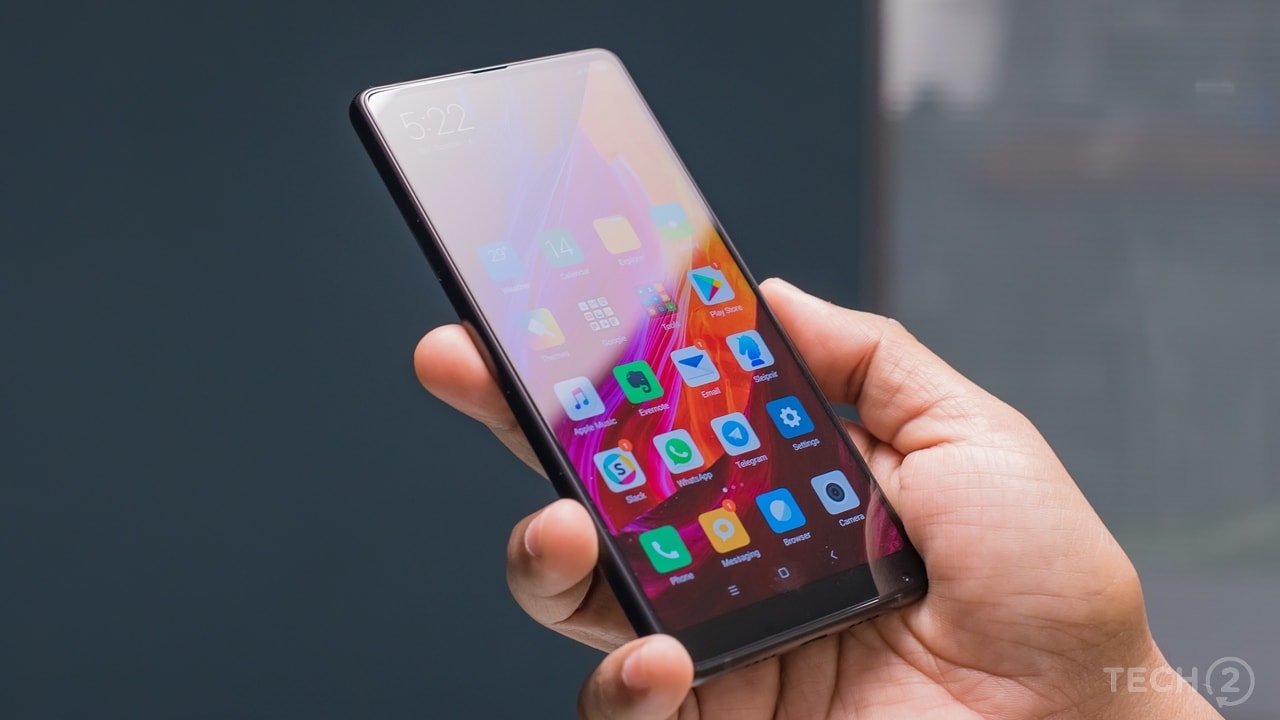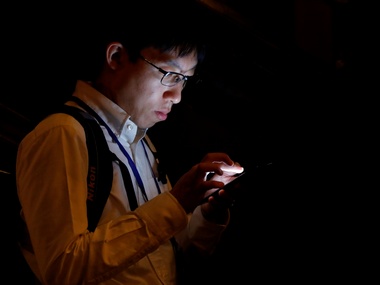Bring up Samsung in a conversation and apart from the curvy Galaxy S8 and the mighty Note 8 , the conversation will touch on the Note 7 debacle, one that will haunt the brand for the rest of its existence. But according to Counterpoint’s latest report, things could get competitive, if not worse. [caption id=“attachment_4061265” align=“alignleft” width=“380”] Representative Image. Reuters[/caption] According to Counterpoint’s Research Market Monitor service, Samsung is not doing too well. This applies both to the premium segment and even when it comes to its smartphone market share as a whole. The report points out that performance from Chinese smartphone brands have remained strong and have contributed to more than half of the total smartphone shipments. “Xiaomi, iTel, Oppo, Vivo and OnePlus were the fastest growing smartphone brands during the quarter.” Referring to the action-packed Q3 2017 quarter, that was pretty much loaded with new smartphone launches. While Xiaomi took up the mid end segment (Rs 10,000 – Rs 15,000) in the last quarter, the premium segment saw quite a drastic change. In its report, which looks into smartphone shipment numbers, Counterpoint states that Samsung had lost its edge in the premium market, and dropped to not rank two, but rank three. Who stole rank 2? That would be Chinese smartphone maker OnePlus. “OnePlus came out with a special buyback offer for the existing OnePlus users during OnePlus 5 launch and offered cashbacks on device exchange. So large number of previous generation OnePlus users upgraded to new phone.” said Parv Sharma, research associate at Counterpoint. “The device also tick marked all the boxes when it comes to high end specifications. Apart from this aggressive marketing campaign around OnePlus 5 and online channel push also helped to become top selling premium device within a quarter of its launch.” he added when quizzed about what OnePlus did differently this year, that it managed to take down a behemoth like Samsung in one of the world’s fastest growing smartphone markets. It is wise to note that Counterpoint defines all smartphones start from Rs 30,000 and above as being part of the premium segment. So a Samsung Note 8, priced at Rs 67,900 and even an Apple iPhone X priced at Rs 89,000, fall in the same category, which may seem a wee bit odd to some, if not many. Looking at the overall picture, it looks good enough. “Samsung and Xiaomi together contributed to almost 45 percent of the smartphone market. This is the first time since 2012, that the top two brands have reached this level of combined share, signalling that key brands are ramping up their presence in India.” said Karn Chauhan, another research analyst in the release. Associate Director Tarun Pathak said that Xiaomi’s performance has been admirable. “Xiaomi continues to post back to back record quarters in India and create new benchmarks. Three out of the top five bestselling smartphones in India were from Xiaomi alone. Xiaomi has been popular in the past for its “value for money offerings”, however, the popularity is now transitioning into performance compared to last year. This can be attributed to a streamlined supply chain effort by Xiaomi and relatively weaker offerings from competitors in the online channel.” But one long look at Counterpoint’s figures and it’s clear that while Samsung is not losing its edge in the smartphone market share, it is however losing momentum in the fact that it hasn’t grown from Q3 2016 to Q3 2017. [caption id=“attachment_4146903” align=“alignnone” width=“1280”]
 Xiaomi’s Mi Mix 2 may look premium, but lacks features like the an IP rating, a quality camera. Image: tech2/Rehan Hooda[/caption] On the other hand, Xiaomi has its goals set and it keeps hogging on the smartphone share from Lenovo and other local smartphone brands. In fact, Xiaomi even launched its first premium flagship the Mi Mix 2 that competes with OnePlus. However, the product still cannot be compared to premium (or as we at tech2 define as the ultra-premium) offerings from Samsung, HTC and obviously Apple. But Counterpoint’s Parv Sharma was of opinion that while Samsung still enjoys the wider distribution network compared to any other brand, the entry of new brands in India over the past few years, have “lured customers into trying out ‘spec-heavy’ alternative devices with a strong value proposition.” The result? Samsung lost out in the sub $150 segment. Based on shipment data, Sharma said that “on a volume basis, Samsung is not declining YoY in India, in fact, a major concern for Samsung is that it is not growing with the same pace as the market.” “Samsung needs to offer a compelling proposition in entry level segment vis-à-vis spec vs price. In entry level segment users normally end up comparing products at different levels before making a purchase decision. Samsung sales in sub $150 segment is still driven by its couple of year older SKU’s like J2 and J7. Apart from this demand is also soft for Samsung’s A and C series in mid and premium segment.” [caption id=“attachment_4072283” align=“alignnone” width=“1280”]
Xiaomi’s Mi Mix 2 may look premium, but lacks features like the an IP rating, a quality camera. Image: tech2/Rehan Hooda[/caption] On the other hand, Xiaomi has its goals set and it keeps hogging on the smartphone share from Lenovo and other local smartphone brands. In fact, Xiaomi even launched its first premium flagship the Mi Mix 2 that competes with OnePlus. However, the product still cannot be compared to premium (or as we at tech2 define as the ultra-premium) offerings from Samsung, HTC and obviously Apple. But Counterpoint’s Parv Sharma was of opinion that while Samsung still enjoys the wider distribution network compared to any other brand, the entry of new brands in India over the past few years, have “lured customers into trying out ‘spec-heavy’ alternative devices with a strong value proposition.” The result? Samsung lost out in the sub $150 segment. Based on shipment data, Sharma said that “on a volume basis, Samsung is not declining YoY in India, in fact, a major concern for Samsung is that it is not growing with the same pace as the market.” “Samsung needs to offer a compelling proposition in entry level segment vis-à-vis spec vs price. In entry level segment users normally end up comparing products at different levels before making a purchase decision. Samsung sales in sub $150 segment is still driven by its couple of year older SKU’s like J2 and J7. Apart from this demand is also soft for Samsung’s A and C series in mid and premium segment.” [caption id=“attachment_4072283” align=“alignnone” width=“1280”] Samsung’s Galaxy Note 8 is a true all-rounder that challenges and even trumps the iPhone 8 when it comes to features. Image: Tech2/Rehan Hooda[/caption] Parv said that Samsung could easily leverage its profits from the premium segment and use it to offer a diverse set of models in the low-end segment, an area where the research analyst felt the Korean giant was lacking in India. Xiaomi too has challenges for itself despite jumping from 6 percent in Q3 2016, to a staggering 22 percent (just below Samsung’s 23 percent) in overall smartphone market share. “It remains to be seen how Xiaomi pivots its channel strategy. Building an offline distribution comes with huge investment and takes a lot of time. Understanding channels and expanding its foot-prints across India will require patience. For the transition from an online retail model to an omni channel retail model, Xiaomi must build teams which understand and maintain relationships with channel partners. So we estimate strong competition between Samsung and Xiaomi in coming quarters.” said Sharma. With all of that said, Samsung SVP, mobile business, Samsung India, Asim Warsi had plenty to comment about. “We are India’s number one mobile phone manufacturer and the country’s most trusted brand. We enjoy market leadership across segments. In the premium segment (Rs 30,000 and above), Samsung’s market share by volume was 65.2 percent and 65.4 percent by value for the quarter ended September 2017 according to GfK.” It is wise to note that Warsi’s comment is based on GfK data, which is based on end-sales, rather than shipment numbers, which is what Counterpoint’s data seems to be derived from. Is Samsung even bothered? For now, it does not seem like it.
Samsung’s Galaxy Note 8 is a true all-rounder that challenges and even trumps the iPhone 8 when it comes to features. Image: Tech2/Rehan Hooda[/caption] Parv said that Samsung could easily leverage its profits from the premium segment and use it to offer a diverse set of models in the low-end segment, an area where the research analyst felt the Korean giant was lacking in India. Xiaomi too has challenges for itself despite jumping from 6 percent in Q3 2016, to a staggering 22 percent (just below Samsung’s 23 percent) in overall smartphone market share. “It remains to be seen how Xiaomi pivots its channel strategy. Building an offline distribution comes with huge investment and takes a lot of time. Understanding channels and expanding its foot-prints across India will require patience. For the transition from an online retail model to an omni channel retail model, Xiaomi must build teams which understand and maintain relationships with channel partners. So we estimate strong competition between Samsung and Xiaomi in coming quarters.” said Sharma. With all of that said, Samsung SVP, mobile business, Samsung India, Asim Warsi had plenty to comment about. “We are India’s number one mobile phone manufacturer and the country’s most trusted brand. We enjoy market leadership across segments. In the premium segment (Rs 30,000 and above), Samsung’s market share by volume was 65.2 percent and 65.4 percent by value for the quarter ended September 2017 according to GfK.” It is wise to note that Warsi’s comment is based on GfK data, which is based on end-sales, rather than shipment numbers, which is what Counterpoint’s data seems to be derived from. Is Samsung even bothered? For now, it does not seem like it.
While 2016 was a tough year for Samsung, Counterpoint hints at strong competition coming from Chinese smartphone maker Xiaomi in the coming quarters.
Advertisement
End of Article


)



